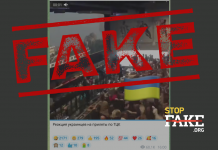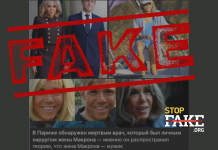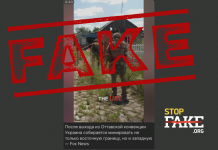Over the past week, two minors died on the Russian militant occupied territory of the Luhansk and Donetsk regions. On April 2, it was reported that a five-year-old boy died in Oleksandrivske in the Donetsk area. On April 6, in the self-proclaimed Luhansk Peoples’ Republic (LPR) two teenage boys were reported to have been hit by a mine explosion in Slovianoserbsk. In both cases, the Russian side accused Ukraine of the deaths of the minors without any relevant evidence, claiming the boy allegedly died from a Ukrainian drone attack, while the teenagers were allegedly hit by an Ukrainian Armed Forces mine deliberately installed on civilian territory.
StopFake.org decided to analyze the facts and propaganda messages disseminated by Russian and separatist media in connection with the minors’ deaths.
Russian propaganda new fakes and manipulations concerning 5-year-old boy’s death
Previously, StopFake.org analyzed the report on the death of a five-year-old child in Oleksandrivske, in detail. In view of the new information, Russian and separatist media started a new wave of disinformation.
On April 5, the OSCE Special Monitoring Mission succeeded in talking to morgue staff and the child’s grandmother over the phone. The autopsy showed that the death was caused by shrapnel wounds and explosive trauma. The grandmother, who was the first to see the boy’s body, told the Mission staff that she was in the house when she heard the explosion and ran outside when she heard a bang. Russian media, in particular RIA, KP, AIF and others, distorted the OSCE SMM report of April 5, saying that the boy was killed “in the shelling.” However, the report has no information about shelling of the locality on that particular day, the type of the explosive device, or its origin.
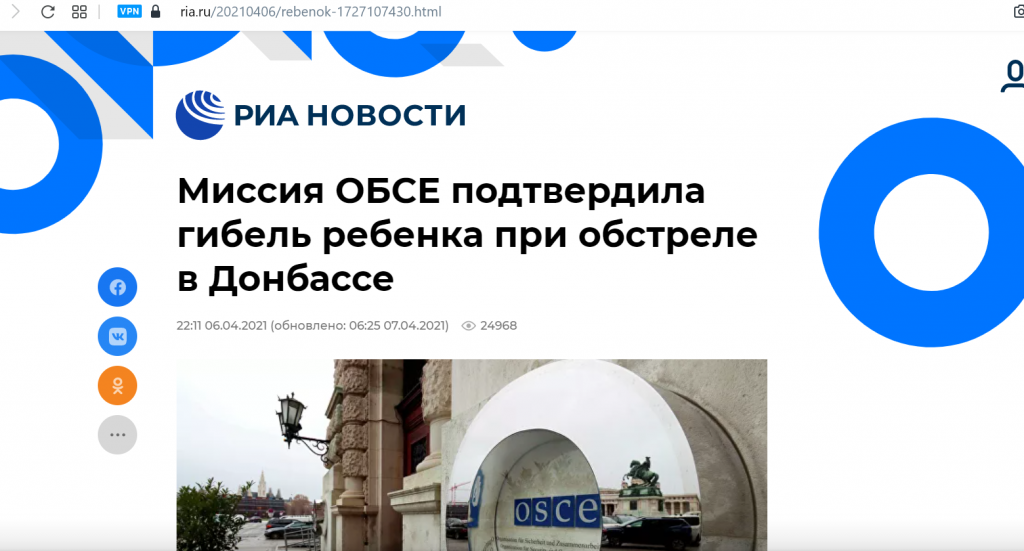
In the programs Vremia Pokazhet (Time Will Tell) of April 6 (22.30) and Vecher s Vladimirom Solovyovym (Evening with Vladimir Solovyov) of April 7, 2021 (25.30) the hosts and the guests of the talk shows accused the OSCE SMM of bias several times for having allegedly refused to come and record the death of the child in Oleksandrivske. The reality of the situation tells different stoty, the daily OSCE SMM report states that, on that day, representatives of the so-called Donetsk Peoples’ Republic (DPR) restricted the Mission’s movement, which made the monitors unable to reach the place where the tragedy happened.
Russian propagandists also claim that Ukraine allegedly denies the fact of the boy’s death. To prove his existence, the pro-Russian blogger Tatyana Montyan attended the child’s funeral, where she repeatedly stressed that his death was not a fake. On the Vecher s Vladimirom Solovyovym (24.00) television program, well-known Russian propagandist Vladimir Kornilov says that Western and Ukrainian media allegedly refuse to acknowledge the boy’s death. “How can they? We have all already acknowledged what tore this boy apart, The OSCE is already forced to include information about his death in its report. But for some reason, nobody went there, nobody measured the shrapnel, nobody assessed where it came from. They never went there,” Kornilov said.
In reality, Ukrainian experts never denied the child’s death, but they did deny the involvement of a Ukrainian military drone. Russia and the DPR group have not produced any evidence of the Ukrainian Armed Forces being in any way involved in the boy’s death. Oleksandrivske is 15 km away from the contact line. Ukraine uses tactical drones in the Donbas with a range of up to 5 km.
While streaming the video from the boy’s funeral, Tatyana Montyan talked to two women who denied information about explosives stored at home. One of the women also claimed that “It is a drone. They dropped the shell. That’s how it happened.” It is not clear, however, whether she was an actual eyewitness.
Later, on Russia 1, the boy’s grandmother said that OSCE SMM representatives who had studied the scene of the child’s death told her that the shell came “from above.” In the OSCE SMM report published on April 6, there is no information about a shell being dropped from the air. The monitors recorded a 20 cm diameter crater in the yard, as well as multiple holes. “The SMM could not assess the type of ordnance that caused the crater. It assessed all the above-mentioned damage as recent and probably caused by shrapnel,” says the report.
What do we know about the teenagers hit by a landmine in Slovianoserbsk?
Russian and pro-Kremlin media, such as NTV, Rossiyskaya Gazeta, TASS, EA Daily, Novorossiya and others spread information that two teenagers were blasted by a Ukrainian land mine is Slovianoserbsk, asaresult, one boy died, while the other was wounded by shrapnel.
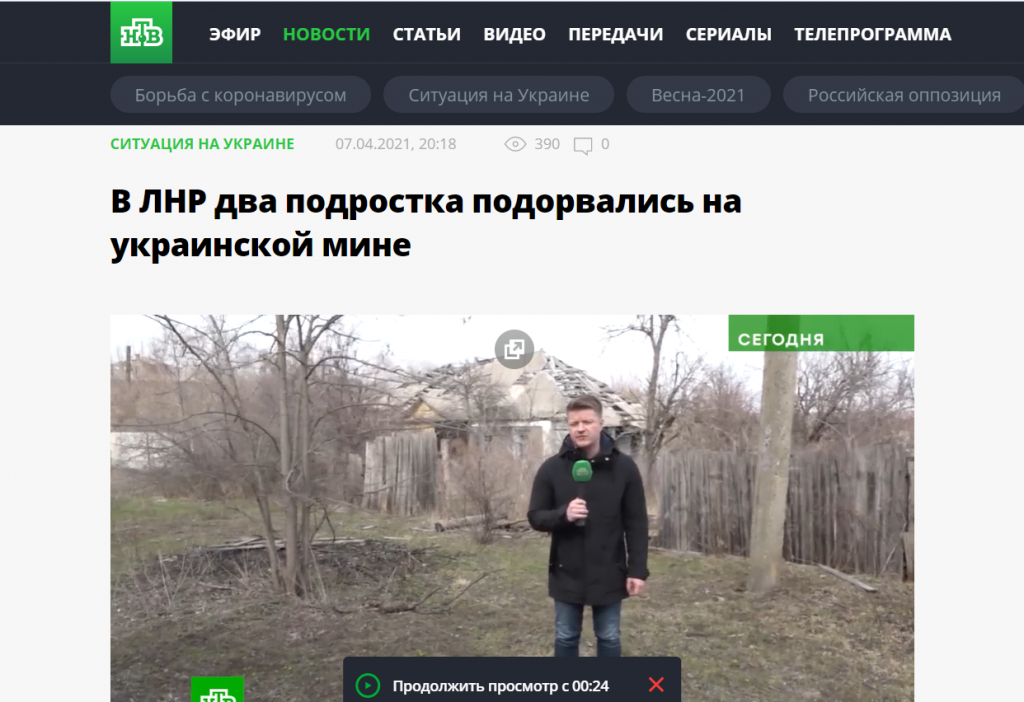
The detonation in Slovianoserbsk was reported by a representative of the so-called people’s militia of the LPR, Yakov Osadchy. The incident he mentioned occurred on the evening of April 6 near the Siverskyi Donets river. Beyond the river is the “gray area,” the inter-position space between the parties of the war. The report says that “an unexploded mine installed during active hostilities detonated,” and that “this is another case when a civilian is blown up on an explosive device left behind by the military units of the Ukrainian Armed Forces.” StopFake.org was able to talk to local residents of Slovianoserbsk, who confirmed the fact of the detonation.
A photo of the deceased was also published online. Born in 2003, Mikhail Kodentsev was a local technical school student. On his personal VK social media page, you can see that Mikhail was last online on the night between April 5 and April 6, and his friends post condolences in the comments. Later, information turned up about the other victim, Eduard Barabashov, born in 2004. In a comment to the Russian TV channel NTV, the teenager said that he and a friend had decided to take a swim in the river, and when they had seen a mine on the shore, one of the guys had stepped on it .
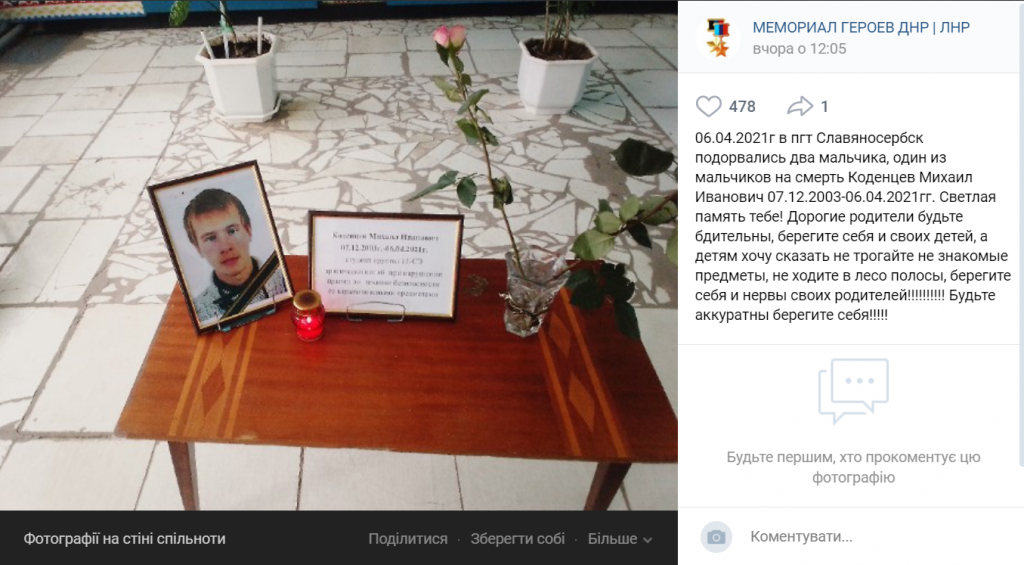
As mentioned before, the so-called people’s militia of the LPR claimed that the mine belonged to the Ukrainian Armed Forces and had been installed during active hostilities, but later, they changed their story. In the evening news on Russian media, it was reported that the mine was recently installed, and the Ukrainian Armed Forces allegedly deliberately mine civilian territories. The press service of the so-called people’s militia of the LPR said that “they were POM-2 mines installed remotely by the personnel of the 80th brigade of the Armed Forces of Ukraine located on the opposite bank of the Siverskyi Donets river.” The United Forces Operation press center refuted this information in response to StopFake’s inquiry: “First, the POM-2 anti-personnel fragmentation mine is prohibited by international treaties. Even before the Russian occupation, Ukraine started to dispose of prohibited ordnance. Secondly, these mines are produced and in service only in the Russian Federation”.
There is no information about this event in the OSCE Monitoring Mission daily report. Also, there is no publicly available information about the explosive device (number, series, date of manufacture, etc.) that would help with its identification.
The Ukrainian side and the OSCE Monitoring Mission regularly record the use of mines prohibited by international treaties by Russian hybrid troops. The aforementioned POM-2 devices are prohibited by the Ottawa Treaty (Convention on the Prohibition of Anti-Personnel Mines and on their Destruction). This is a mine of circular action with several thousand shrapnel fragments enclosed into its shell, which form a radius of continuous destruction when detonated. Experts also note that POM-2 usually cripple people ripping off their legs rather than killing them. Russia is not a signatory to the Convention, and it continues to manufacture, store and use all types of Soviet-Russian anti-personnel mines.
According to the United Forces Operation Headquarters, when the ceasefires begin, the enemy actively mines the positions of the Ukrainian Armed Forces. “A mine is more of a defense weapon. The leading echelons of the Russian occupation forces are not 100% equipped, their level of equipment is about 20–40%, and this is their way to defend their positions from penetration of our intelligence agents deep into the territory they hold. They are placed in locations where the enemy expects us to advance. And let us keep in mind the psychological effect, because the presence of mines causes high tension and exhausts the soldiers,” explains military expert Serhii Hrabskyi during the Radio Donbas.Realities program.
Notably, local residents are also doubtful that it was the Ukrainian side that left the mines. You can often see such comments from local residents under posts about similar events:

Together with international organizations, Ukraine regularly conducts mine clearance operations in the Donbas. Miljenko Vahtaric, Technical Advisor on Mine Action of the OSCE Project Coordinator in Ukraine, said in his interview for Radio Liberty that there is no information on systemic work on mine clearance in the Russian occupied territories. The United Forces Operation press center also told StopFake that there is no demining work taking place the LPR and DPR occupied territories. “They benefit from not clearing the mines. They use all cases of civilians getting injured in their information warfare,” says the Ukrainian military.
Ukraine remains one of the most heavily mined countries in the world. According to UNICEF, between April 2014 and August 2020, at least 42 children were killed by mines and explosives on the territories of Donetsk and Luhansk oblasts, and 144 more were injured.
How do propagandists use children’s deaths?
Fakes about children murdered in the Donbas are an integral tool of the information war that Russia regularly employs against Ukraine. The image of a murdered child has massive psychological impact on all sides of the conflict. In 2014, Russia spread the now-textbook fake about the crucified boy to several ends: first, to dehumanize Ukrainian soldiers by comparing them to Nazis; secondly, to legitimize Russia’s actions in the Donbas for Russia’s own population and the international community; and to motivate Russian citizens to join the militants.
On social media, in pro-Russian and separatist groups, the information about minors’ death was circulated under the slogan Ukraine Declares Terrorist War on Civilian Population. As for Russian state TV channels, Nazi atrocities against Donbas civilians became the topic of the week on political shows.
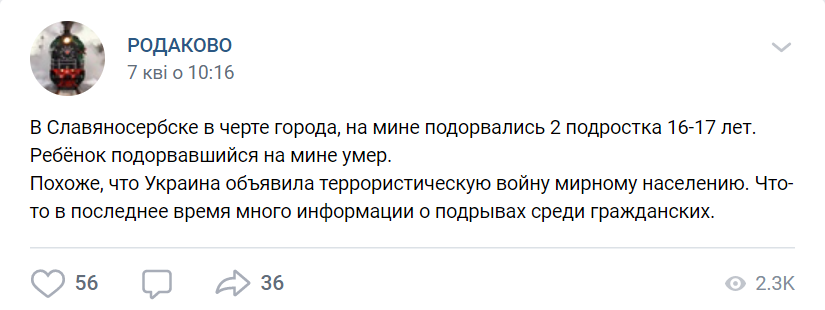
In the Russian media space, information about Ukrainian soldiers being allegedly guilty of the deaths of minors is presented as irrefutablet. In this vein, the death of a five-year-old boy was discussed as the culmination of the atrocities of the “Ukrainian occupants of Donbas.” Russian propagandist Vladimir Solovyov started his show by declaring that “part of the Donbas is occupied by Nazi troops” for whom “there is no value in human life.”
“Ukrainian troops calmly approach the border and shoot civilians like on safari,” says one of the guests of the Vremia Pokazhet television program (17.50). “Zelenskyy acts like Hitler in the 1930s because he is allowed to do all this.” “We cannot do things the way they do,” agrees the hostess. The same topic is covered in another talk show. The hosts of the 60 Minut (“60 Minutes”) program talk about the “human abomination” in Ukraine and how the Ukrainian Armed Forces deliberately exterminate Donbas civilians. Comparing Ukrainian soldiers to Nazis is not new on Russian television, but adding the alleged involvement in the murder of children to the mix makes the image of a “Ukrainian Nazi” all the more sinister.

The host of the Vremia Pokazhet show asks the studio while showing a video from the boy’s funeral: “Are they still our brothers, or are they dehumanized beasts? Or these people wanted to avoid being Russian so much they stopped being people.”
The topic of Ukrainians’ “loss of humanity” was also raised in other TV shows. For example, in another episode of the show, Aleksandr Sherin, first deputy chair of the Duma Defense Committee said (24.10): “You can see this kind of hell only in movies about the Great Patriotic War… Is there any doubt that this scum would hurt a four-year-old child? Of course not! Are they capable of pity, conscience, humanity? No! These are animals that must be exterminated.”
Another related topic on Russian political talk shows was that “we (Russians — ed.) are being brought to the breaking point.” The guests and presenters alike regularly said that Ukraine deliberately escalated the conflict to “invade the LPR and DPR.” “Ukraine is intensifying the hysterical tensions to get the go-ahead from its Western partners, from the USA, to resolve the conflict by force,” says the so-called DPR Foreign Affairs Minister Natalia Nikonorova (Vremia Pokazhet, 27.10). Pro-Russian blogger Tatyana Montyan said on Vremia Pokazhet (27.30) that the issue of Russia’s participation in the upcoming conflict depends on the answer to the question “what matters more to Russia—people killed in Donbas or Nord Stream 2.” Speaking about Russia’s future choice, the presenters of Vremia Pokazhet and Vecher s Vladimirom Solovyovym repeated Churchill’s quote multiple times: “You were given the choice between war and dishonor. You chose dishonor and you will have war.”


